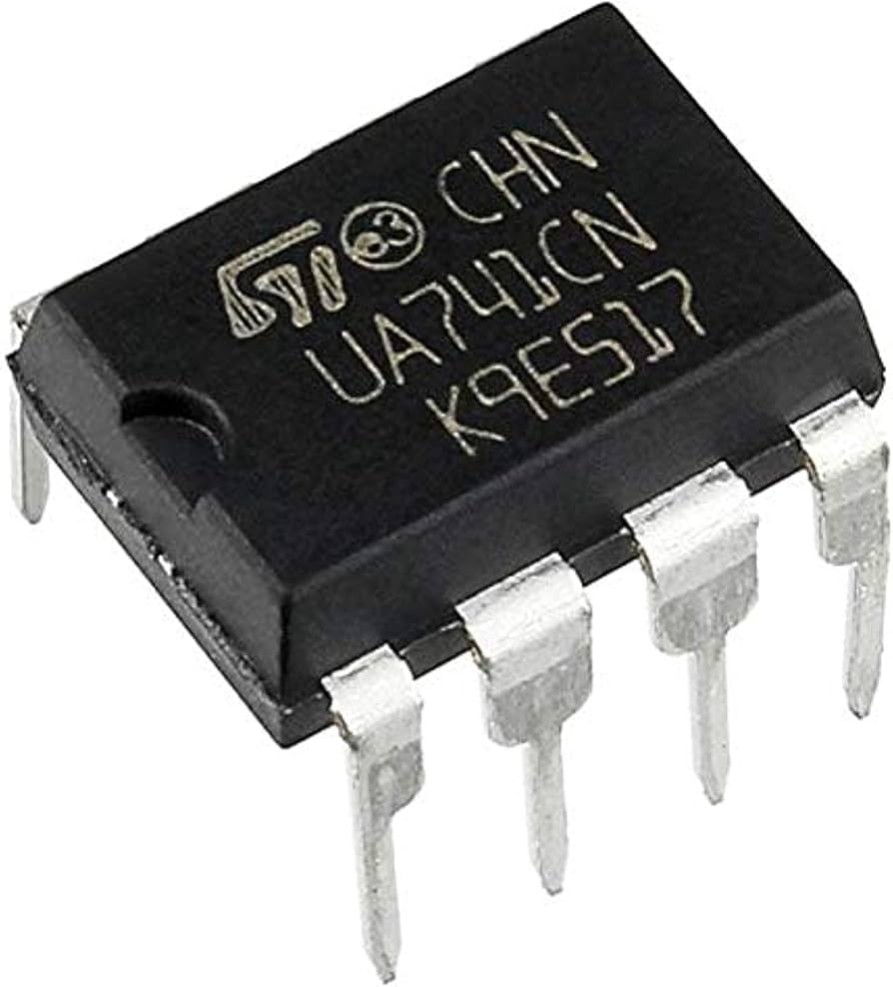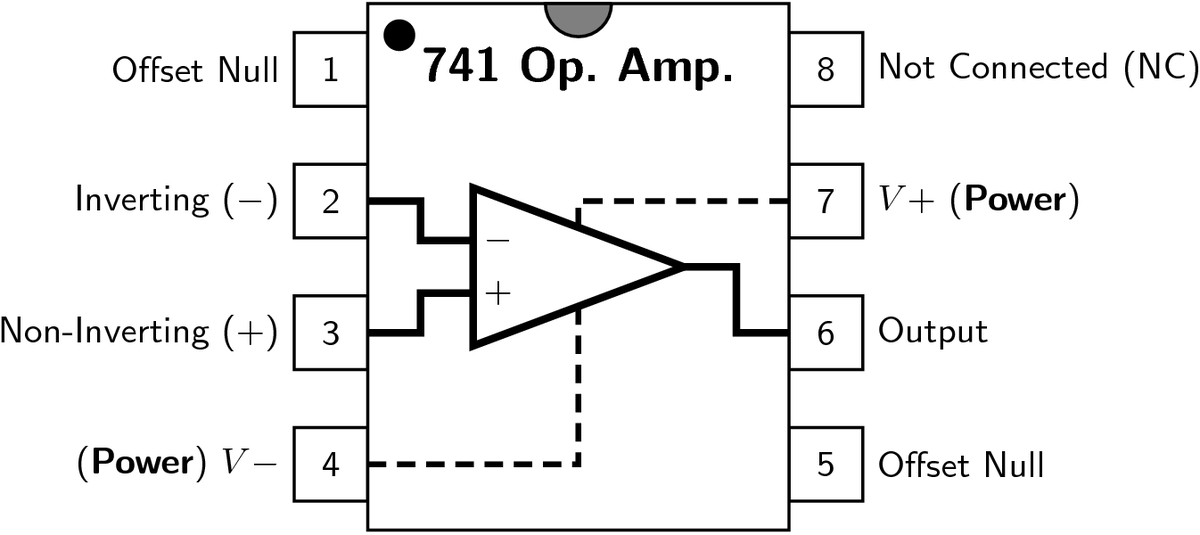





741 Op-Amp IC
The 741 IC refers to the LM741, which is a widely used operational amplifier (op-amp). An op-amp is a high-gain electronic voltage amplifier with a differential input and typically a single-ended output. The LM741 op-amp is one of the most common op-amps and has been a standard in analog electronics for decades.
₹ 11 ₹19
19
Add FAQ
The 741 IC refers to the LM741, which is a widely used operational amplifier (op-amp). An op-amp is a high-gain electronic voltage amplifier with a differential input and typically a single-ended output. The LM741 op-amp is one of the most common op-amps and has been a standard in analog electronics for decades.
Key Features of the 741 IC:
- General Purpose: The LM741 is a general-purpose op-amp designed for various analog applications.
- High Gain: It has a very high open-loop voltage gain (typically around 100,000 or more).
- Low Power Consumption: It requires relatively low power to operate.
- Single Supply Operation: It can work with a single supply voltage, typically between ±10V to ±18V, although it can work with a broader range.
- Internal Compensation: The LM741 has internal frequency compensation, which makes it stable in a wide range of configurations and applications.
- Wide Voltage Range: It can handle a voltage range of ±15V (often used with a 15V or 12V supply).
- Standard Package: It typically comes in an 8-pin Dual In-Line Package (DIP), though surface-mount packages are also available.
Pinout of the LM741 (8-pin version):
- Offset Null (Pin 1): Used to null the input offset voltage (typically requires a potentiometer in the circuit).
- Inverting Input (Pin 2): The input terminal for the negative side of the differential signal.
- Non-Inverting Input (Pin 3): The input terminal for the positive side of the differential signal.
- V- (Negative Voltage Supply) (Pin 4): The negative power supply pin.
- Offset Null (Pin 5): Another offset voltage adjustment pin.
- Output (Pin 6): The output terminal where the amplified signal is taken.
- V+ (Positive Voltage Supply) (Pin 7): The positive power supply pin.
- NC (No Connection) (Pin 8): This pin is not used in the 741.
Applications of the 741 Op-Amp:
- Voltage Follower (Buffer): The LM741 can be used as a buffer to provide high input impedance and low output impedance, ensuring that the signal is not distorted or loaded by the following circuit.
- Inverting Amplifier: It can amplify the input signal in an inverted phase (180° phase shift).
- Non-Inverting Amplifier: Used to amplify the input signal without inverting its phase.
- Differential Amplifier: The op-amp can amplify the difference between two input voltages.
- Integrator: In circuits where the output is the integral of the input signal (used in waveform generators or signal processing).
- Summing Amplifier: Used to combine multiple signals and produce a weighted output.
- Filters: Used in active filter circuits, such as low-pass, high-pass, band-pass, and band-stop filters.
- Comparator: Although not typically its primary use, the 741 can be used as a comparator in certain applications to compare two voltages and output a high or low signal depending on which input is higher.
Characteristics and Limitations:
- Speed: The LM741 is not the fastest op-amp available (with a typical slew rate of 0.5 V/µs), so it may not be suitable for high-frequency applications.
- Input Offset Voltage: It has a small input offset voltage (typically 1 to 5 mV), which may require adjustment in some precision applications.
- Limited Output Swing: The output of the LM741 doesn't reach the supply rails (i.e., the output voltage can't go all the way to the power supply levels). For example, if using ±15V supplies, the output may only swing from approximately -13V to +13V.
Common Replacements for the 741:
While the LM741 is still widely used, there are more modern op-amps with better performance characteristics, such as:
- TL081: A faster, low-noise op-amp.
- LM324: A quad op-amp (four op-amps in one package).
- LM358: A dual op-amp, similar to the LM324.
Conclusion:
The LM741 IC is a versatile, easy-to-use operational amplifier that is commonly used in educational projects, audio amplifiers, signal conditioning, and many other analog circuit applications. It provides a reliable solution for tasks that involve amplification, filtering, and other analog signal processing needs.

0 Reviews For this Product












2.jpeg&width=225&quality=80)
2.jpeg&width=225&quality=80)
.jpeg&width=225&quality=80)

